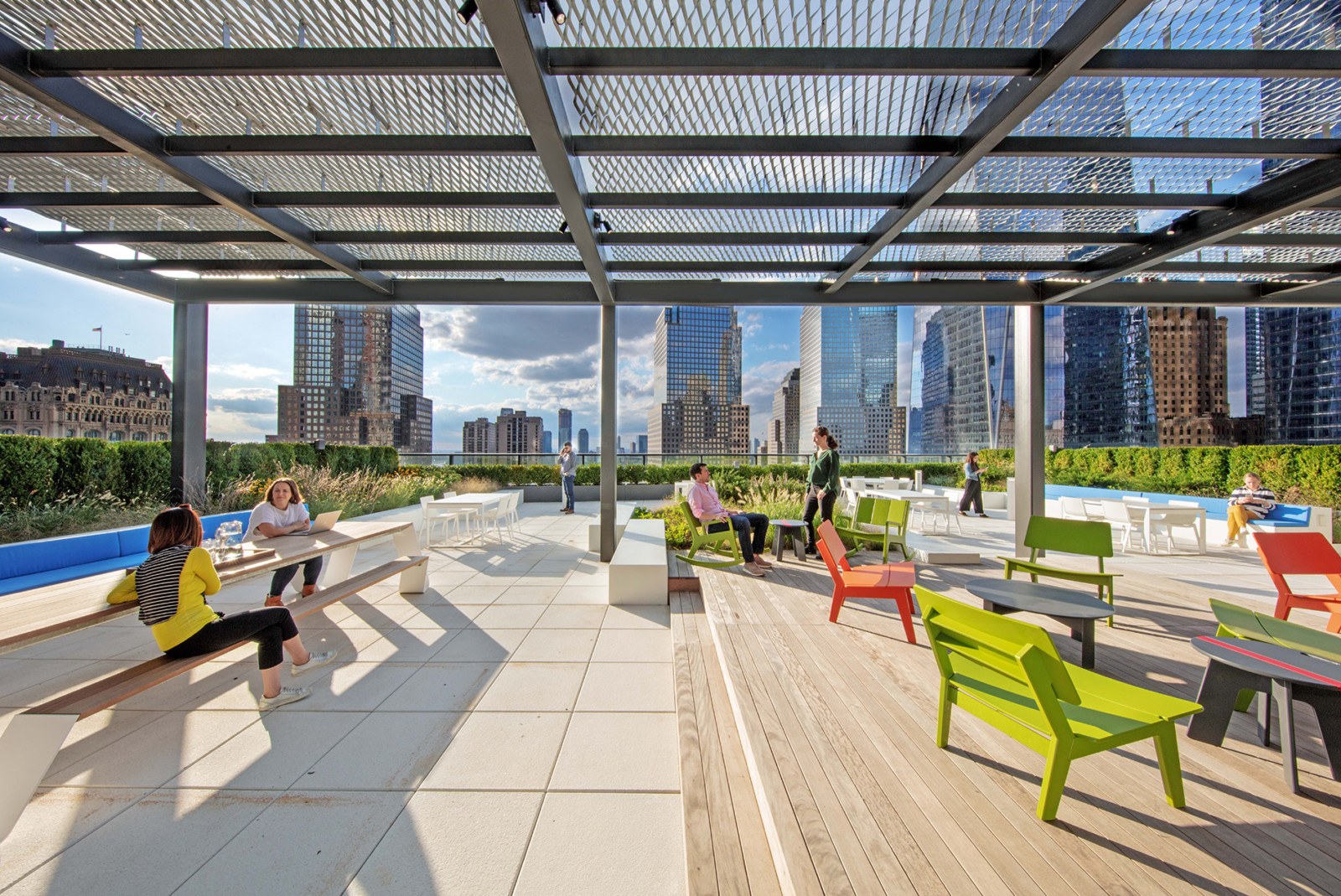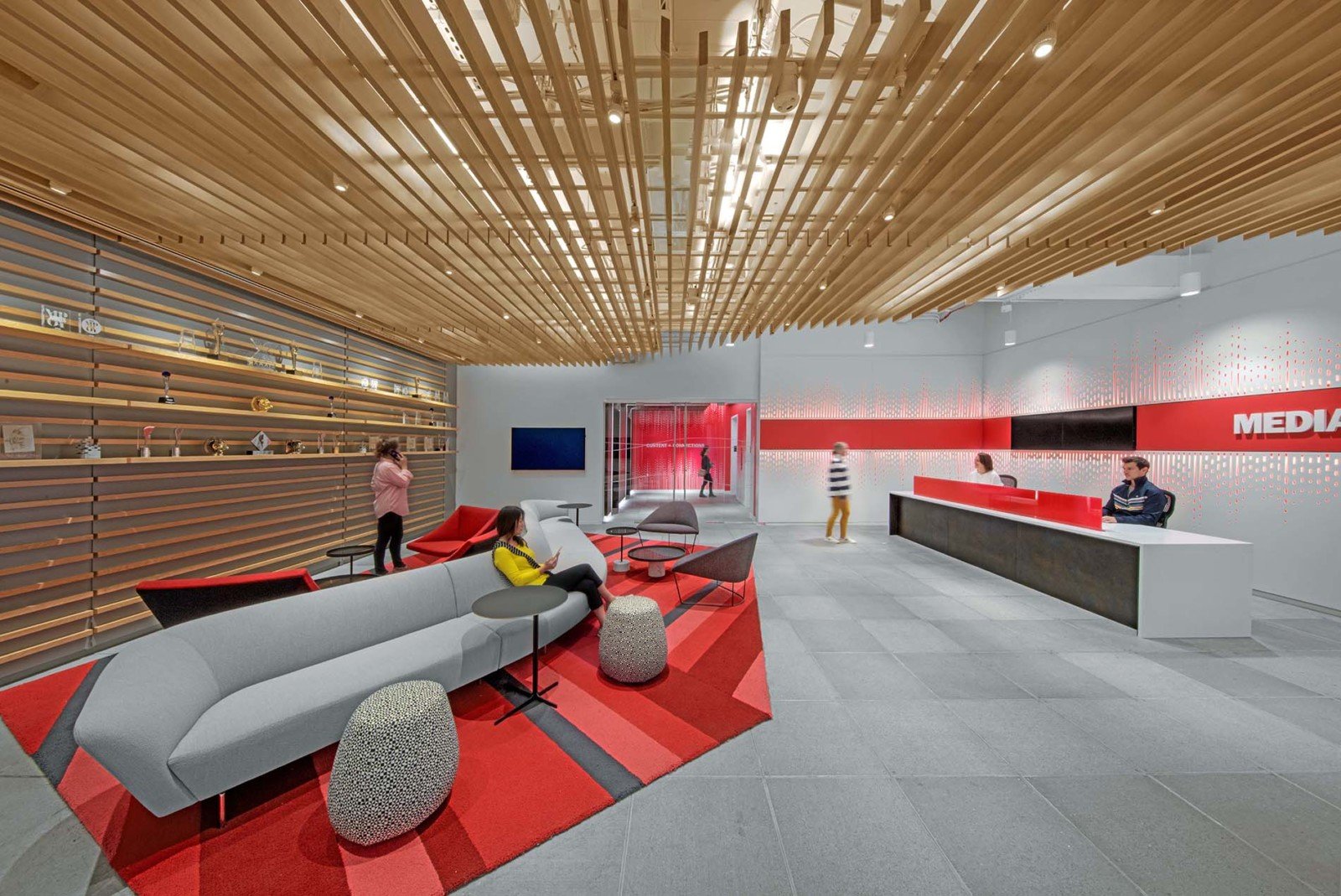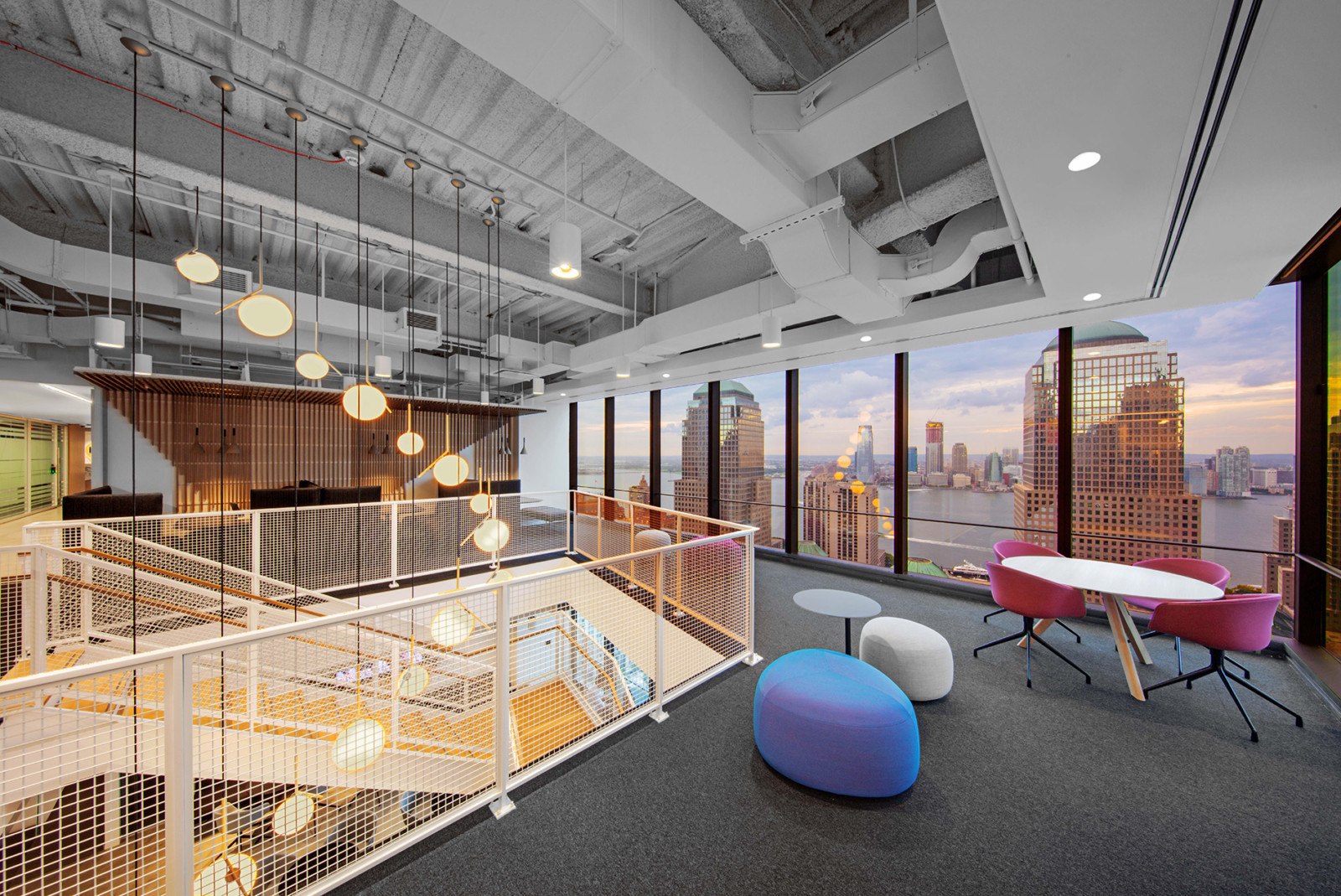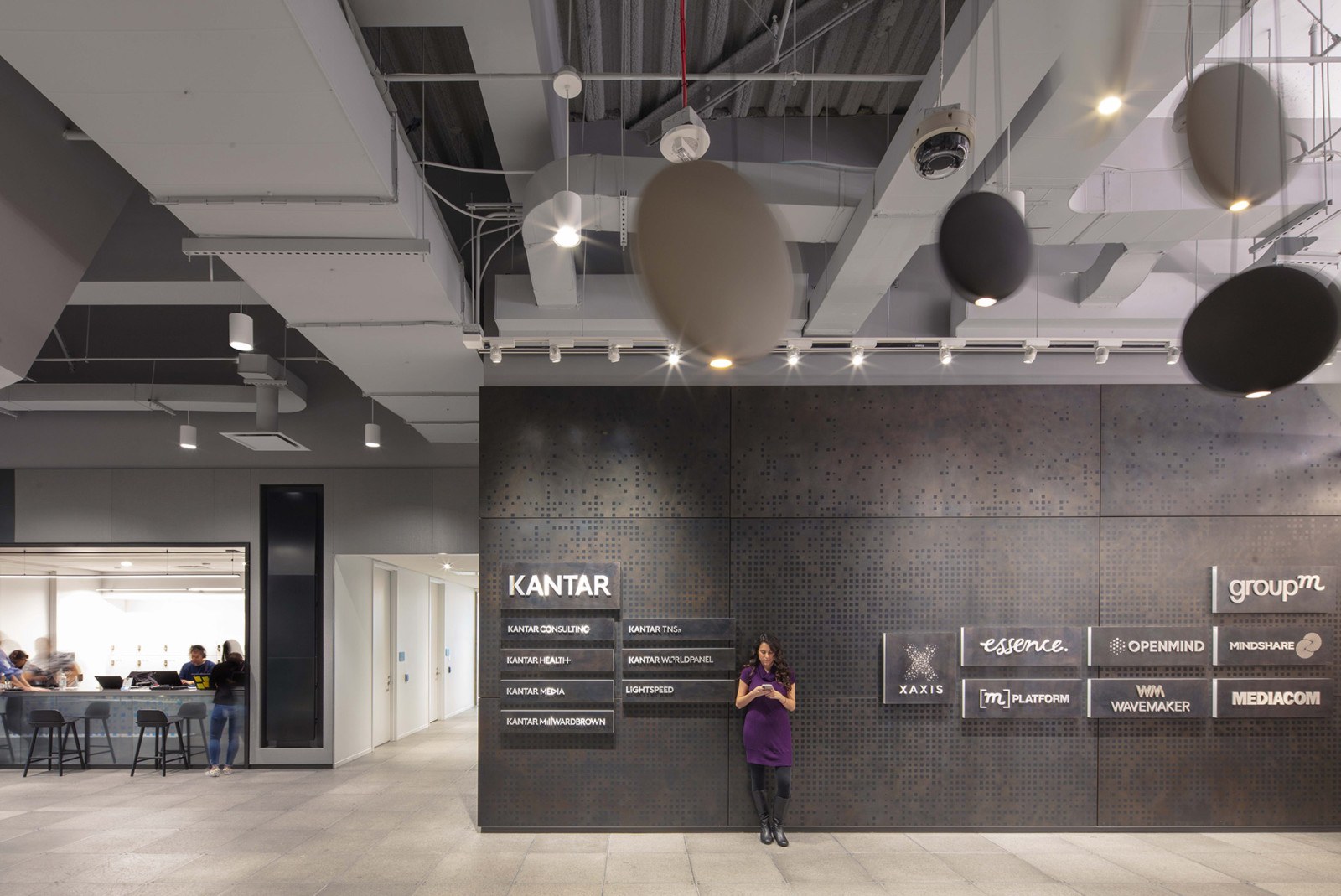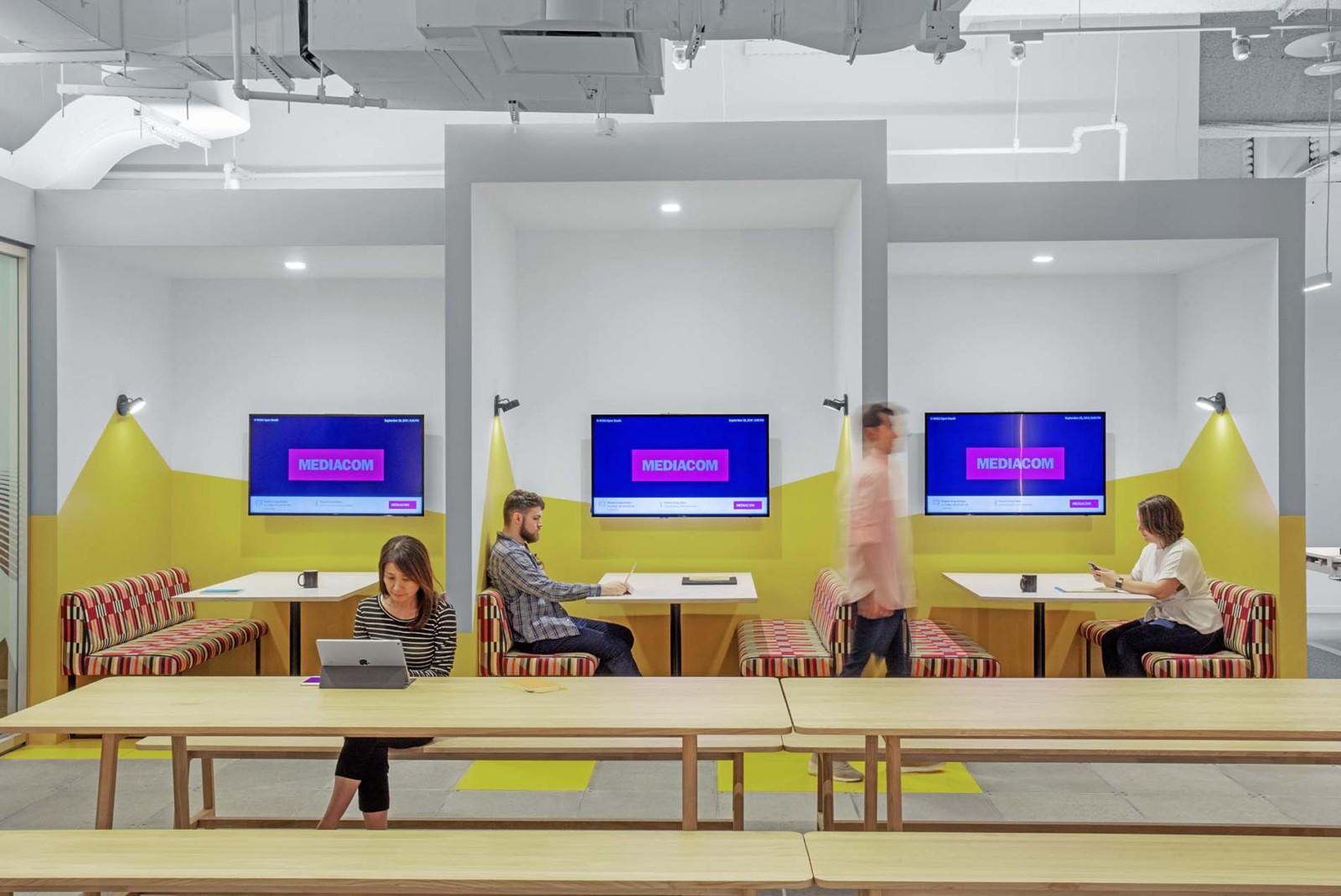HOK designed branded office spaces for eight WPP agencies with two floors of shared amenities at 3 World Trade Center.
Excerpted from Interior Design:
In one sense the remit was straightforward: WPP, the London-based international advertising and public relations behemoth, wished to gather the New York offices of several subsidiaries into a single location. They chose 3 World Trade Center, the 80-story tower by Pritzker Architecture Prize–winning Richard Rogers of Rogers Stirk Harbour + Partners, and HOK won the bid to design the consolidated workplace.
 Many factors raised the complexity of the commission, however, starting with its sheer size: 700,000 square feet (that’s more than 16 acres) on 14 floors, including a 3,000-square-foot outdoor terrace. Additionally, WPP wanted an innovative, creative habitat; maximum interconnectedness among its 4,000 on-site employees; and a high degree of versatility for potential growth and reconfiguration over the course of its 20-year lease. The company also asked that each corporate entity’s space be individually designed in accordance with its function, branding, and mission.
Many factors raised the complexity of the commission, however, starting with its sheer size: 700,000 square feet (that’s more than 16 acres) on 14 floors, including a 3,000-square-foot outdoor terrace. Additionally, WPP wanted an innovative, creative habitat; maximum interconnectedness among its 4,000 on-site employees; and a high degree of versatility for potential growth and reconfiguration over the course of its 20-year lease. The company also asked that each corporate entity’s space be individually designed in accordance with its function, branding, and mission.
Two major WPP subsidiaries moved to 3WTC: Kantar, a global market-research consultancy, and GroupM, the planet’s largest media investment conglomerate, which places approximately one-third of all ads worldwide. The latter oversees seven smaller divisions—Essence, MediaCom, Mindshare, [m]Platform, OpenMind, Xaxis, and Wavemaker—all of which had to be accommodated, too.
While the sprawling project was helmed by HOK director of interior design Tom Polucci, each subsidiary was assigned its own designer to provide it with a unique environment.
Polucci and his team devised a master plan to maximize creative variation while meeting the client’s budget and schedule. The envelope was kept consistent and neutral, with a color palette of black, white, and grays, and materials like stone, steel, laminate, and wood. The overall look is “refined industrial,” so ducting suspended from the ceiling remains visible, downtown-loft style.
And individual spaces are broken into three unequal zones: the truly bespoke, the flexible, and the fixed. Fully custom spaces include reception and other client-facing areas. Fixed areas house “pantries, coffee/tea points, small and medium conference rooms, and huddle and focus spaces,” Polucci enumerates, but even these have been individualized to a limited extent with colors and finishes.
